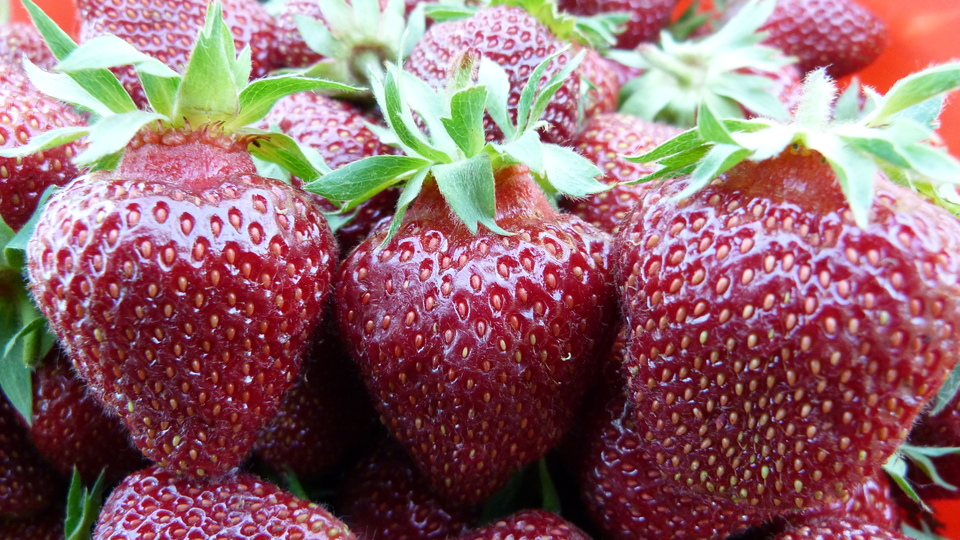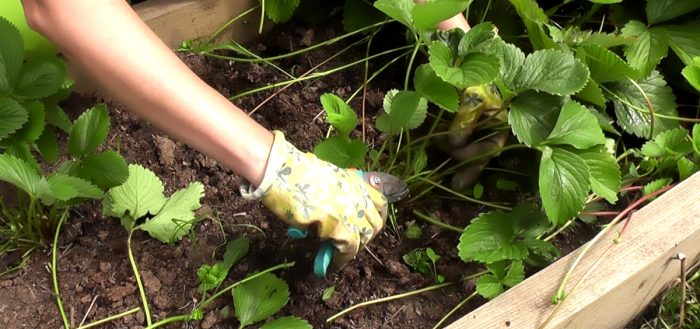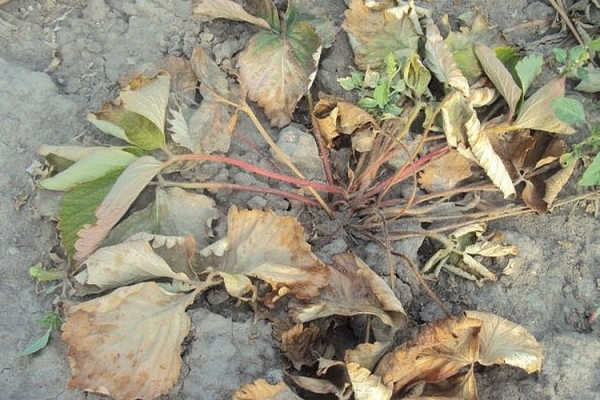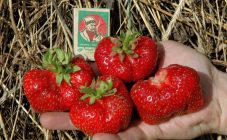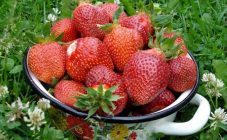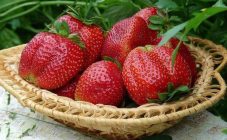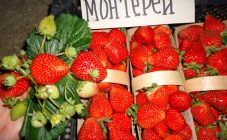Content:
Thanks to the efforts of domestic breeders, the Russian and world assortment of strawberries is constantly increasing. A prominent place in it is occupied by old varieties, which are of interest both in practical cultivation and in breeding research. One of them is the Ruby Pendant variety (also known as Strawberry Pomegranate Pendant, Strawberry White Ruby).
History of the Ruby Pendant variety
Strawberry is one of the most widespread varieties of berry plants in Russia and the world. It is a perennial herbaceous plantation of the Dicotyledonous class, the Rose family. The plants have a fibrous root system, which lies at a depth of about 20-30 cm. The fruits are false berries. They usually have a rich sweet taste.
Strawberry variety Ruby pendant was obtained on the basis of the All-Russian Research Institute of Genetics and Selection of Fruit Plants (Michurinsk, Tambov Region). For this purpose, hybridization of varieties Zenga Zengana and Fairfax was carried out. The breeder Zubov and his colleagues are considered the authors of the variety. Since 1998, the variety has been listed in the State Register of Breeding Achievements.
Description of Strawberry Ruby Pendant
The ruby pendant looks like a bush of medium vigor and semi-spreading type. The root system is strong and stable. The foliage is moderately arranged, of medium size. The flower stalks are umbrella-shaped; they are located slightly below the leaf blades. The mustache is oblong, enlarged.
The variety forms fruits of medium size, weighing 10-20 g on average. Their shape is cone-shaped, typical for the culture in question, neat, the exterior resembles a pendant or pendant. These suspensions have a shortened neck. Their pulp is compacted, rich dark red color. The peel is characterized by the same color with a burgundy bloom and a specific shine. The fruits contain a limited amount of seeds, which are not too strongly pressed into the berry pulp. The crop has a pleasant sweet taste and excellent aroma.
According to the description of the Rubin strawberry variety, berries ripen simultaneously and simultaneously. Strawberry fruits are separated from the plant effortlessly, do not wrinkle or injure. The dense pulp makes it possible to transport and process the variety.
The yield of the Ruby Pendant variety is at an average level - about 500 g of fruit can be harvested from one bush. Such productivity of the Ruby pendant limits the possibility of its cultivation for sale, while it is ideal for home consumption.
Strawberry Ruby is resistant, that is, able to lay flower buds under the influence of long daylight hours and high air temperatures. Thanks to this, two strawberry crops can be harvested per season.
Agrotechnics
Landing
Planting material of the variety can be purchased or ordered at specialized points of sale.Strawberry Ruby pendant is best grown on slightly acidic or neutral soils, in which all the necessary nutrients are present. The bushes of plants are relatively large in size, therefore, when planting, it is recommended to choose an appropriate scheme that would provide the plantings with a sufficient level of nutrition. Most often, a distance of 35-40 cm is maintained between two bushes, in some cases a more rare planting is allowed.
Strawberry seedlings are most often planted in the spring or fall in the afternoon. Before planting, they are kept in a cool room for 5 days. On each seedling, only two inner leaves are retained, removing all the rest, especially dry and old ones. Without this, the root system runs the risk of not coping with rooting, and the plant will die. Immediately before planting in the hole, the roots of the planting material are dipped in a chatter box, prepared by mixing peat and clay in equal proportions.
Upon completion of planting, it is necessary to mulch the strawberry plantations. For this purpose, either a special covering material for plants or compacted black agrofibre is used. This will help protect the plants from weeds. Thanks to this, the labor and time of the summer resident is saved, which could have been spent on regular weeding. With mulch, it is possible not to loosen the soil at the end of the next irrigation, which allows you not to injure the strawberry bushes once again. The second advantage of the covering material is that the plants stay clean after rainfall.
A significant disadvantage when using agrofibre is the need for more frequent watering, since rainwater practically does not penetrate under it. If possible, it is better to install a drip irrigation system on the plot.
Watering
Irrigation is carried out in ways typical for strawberries, which include:
- drip;
- sprinkler;
- intra-soil.
This strawberry variety reacts negatively to excessive waterlogging. Excess moisture can provoke rotting of the root system. For each square meter of plantings, it is enough to add 10-12 liters of warm settled water.
Top dressing
The ruby pendant should be fully provided with all macro- and microelements, however, at the beginning of cultivation, the main ones are of the greatest value - nitrogen, potassium and phosphorus. In view of this, at the beginning of the growing season, special emphasis is placed on the use of nitrogen-containing dressings. It is best to use organic fertilizers during this period - humus or compost. Fresh manure and mineral fertilizers are not recommended, since they immediately provoke an excessive growth of the vegetative mass to the detriment of the fruit.
In autumn, it is important to provide the plant with the three main macronutrients sufficiently. You can get them by using manure and ash. This is especially necessary for young plantations planted this year.
Thus, strawberry pendant is fed according to the following scheme:
- First feeding... It is carried out in early spring, when the snow has completely melted, and the temperature begins to rise rapidly.
- Second feeding. It is carried out at the end of the first wave of the harvest. Its purpose is for plants to form and lay flower buds for next year's harvest.
- Third feeding. It is carried out after the entire crop has been fully harvested. It is necessary for the plantations to properly prepare for the impending winter period.
Pruning
Strawberries certainly begin to grow mustaches during the growing season. Among them, it is necessary to select the largest and fully formed ones and save them, while all the rest are subject to timely removal. The remaining whiskers are pinched, trying to prevent their growth and rooting. They take on a significant portion of the nutrients, which negatively affects the productivity of strawberries.
Transfer
Remontant strawberry varieties, which also include the Ruby Pendant, cannot be cultivated on the same plot for more than 3-4 years in a row. Failure to comply with this rule leads to a decrease in productivity and a gradual decrease in the size of the fruit. This can be avoided by timely transplanting the strawberry whiskers to a new plot.
Whiskers are harvested only from the largest and healthiest plants, which exhibit especially high yields. Sometimes strawberries are transplanted in the spring, but it is best to do this in September. During the fall, the plants will have time to root well, and as spring comes, they will begin to grow again intensively.
Plant protection against diseases
Strawberry Pendant has a relative resistance to the main diseases of the culture. However, in warm and humid years, its plantations can be seriously affected by powdery mildew and gray mold. Prevention against them is spraying plants with preparations based on copper or Bordeaux liquid, which is carried out twice during the growing season - before the beginning of the flowering phase and after harvesting all the fruits.
In some cases, the strawberry variety may suffer from verticillitis. Bordeaux liquid and other appropriate fungicides are also used against it.
Preparation for wintering
In the fall, it is necessary to remove all old foliage from the plantings, keeping only the young leaves. The resulting waste can either be burned, or you can prepare top dressing on their basis by placing foliage in a compost pit.
Plants need a mandatory shelter from the winter cold. For this, the following materials can be used:
- straw;
- hay;
- dry foliage;
- sawdust;
- spruce branches.
Advantages and disadvantages
The characteristics of the Ruby pendant are increased yield and relative disease resistance. No serious flaws were noted behind it.
Having basic knowledge of the Ruby pendant variety and owning the cultivation technology, you can get high yields of good quality, which will delight the gardener and summer resident. Despite the more than 20-year history of the Ruby Pendant strawberry, the variety is still considered promising for the European part of Russia.
